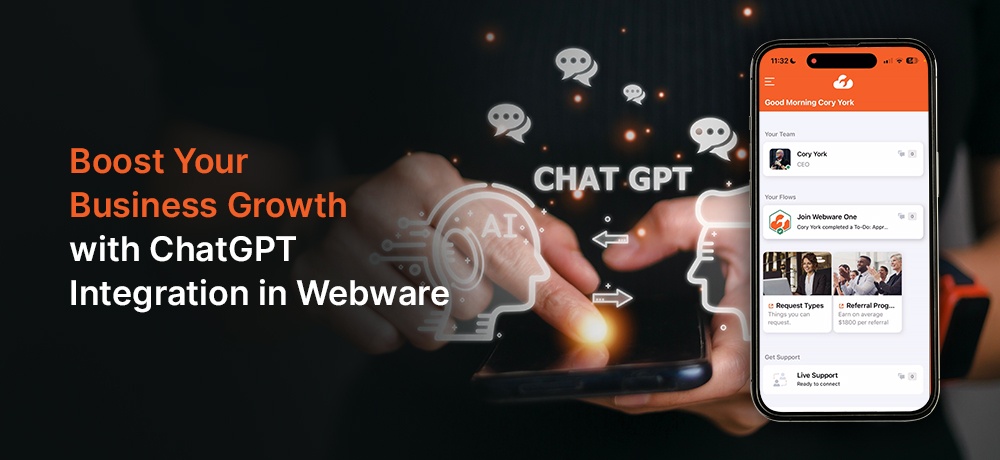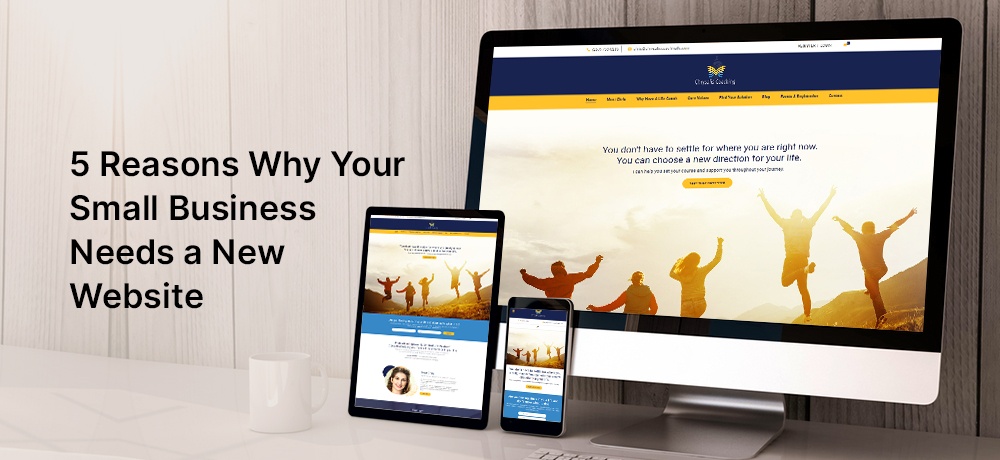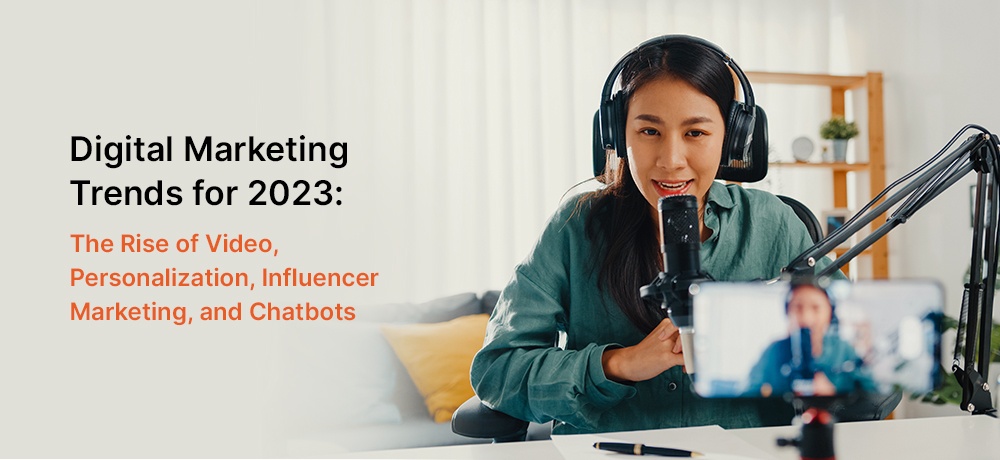How to Set Up a Successful Digital Marketing Plan for Small Business Clients: A Guide for Digital Marketing Agency Owners
As a digital marketing agency owner, setting up a successful digital marketing plan for your small business clients is essential to ensuring their success in the digital space. Digital marketing is a rapidly growing industry, and as more small businesses turn to the online space to promote their products and services, it’s important to have a solid digital marketing strategy in place to help your clients stand out in a crowded market.
In this blog, we will take a look at the steps you can take to set up a successful digital marketing plan for your small business clients.
Define Your Client’s Objectives
Before you can create a successful digital marketing plan for your clients, it is essential to define their objectives. You need to understand what the client wants to achieve with their online presence. This could be anything from increasing website traffic, generating leads, or improving brand awareness. By understanding their objectives, you can create a digital marketing plan that is tailored to their specific needs.
Analyze the Target Audience
It is essential to analyze the target audience to create an effective digital marketing plan. This includes identifying the demographics, behaviors, and interests of the audience. This information will help you to create content that resonates with the target audience and is more likely to convert them into customers.
Extra tip: Try to really nail down this step and narrow their target audience for future campaign success
Conduct a Competitor Analysis
To stand out in a crowded market, it’s important to know what your client’s competitors are doing. A competitor analysis will help you to identify their strengths and weaknesses, and how your client can differentiate themselves in the market. This information can create a unique selling proposition (USP) that sets your client apart from the competition.
Develop a Content Strategy
Content is king in the digital world. A well-crafted content strategy can help to drive traffic to your client’s website, increase engagement on social media, and improve their search engine rankings. Your content strategy should be based on the client’s objectives, target audience, and USP. This could include blog posts, social media posts, videos, and infographics.
Optimize the Website for Search Engines
Search engine optimization (SEO) is essential for any digital marketing plan. By optimizing the website for search engines, you can improve the visibility of the website and drive more traffic to it. This includes optimizing the website’s content, meta tags, and images for relevant keywords.
Utilize Social Media
Social media is an essential part of any digital marketing plan. It provides a platform for businesses to engage with their audience and promote their products and services. By creating a social media strategy that is tailored to the client’s objectives, you can increase engagement and drive traffic to their website.
Measure and Analyze Results
Measuring and analyzing the results of your digital marketing plan is essential to its success. This includes tracking website traffic, engagement on social media, and the conversion rate of visitors into customers. By analyzing the results, you can identify what is working and what needs to be improved.
As a digital marketing agency owner, setting up a successful digital marketing plan for your clients can be a time-consuming and complex process. However, with our white-label program, we can take care of all of this for you. Our all-in-one platform is designed to streamline your marketing efforts and focus on growth, giving you more control over your clients and business. You can customize the platform with your own branding, maintaining a cohesive and consistent brand presence. Additionally, the platform includes features to easily communicate with and invoice your clients, further streamlining your business operations. With our white label program, you can have your own branded digital marketing SaaS platform, featuring a variety of tools to effectively market your agency and expand your business through digital marketing efforts. Let us help you take your agency to the next level.
Book a demo to learn more about our white-label program here.
The Power of Interactive Content: How Quizzes, Polls, and Surveys Can Boost Engagement and Drive Results
In today's digital age, it's not enough for businesses to simply create content and hope that it resonates with their audience. With so much noise online, companies need to find new and innovative ways to stand out and connect with their customers. This is where interactive content like quizzes, polls, and surveys come in.
Interactive content is not only engaging, but it's also a great way to gather valuable data and insights about your audience. In fact, according to a study by Content Marketing Institute, 81% of marketers agree that interactive content grabs attention more effectively than static content.
Here are some practical tips for creating effective interactive content that drives engagement and results:
Know your audience:
Understanding your target audience is essential when creating any kind of content, especially interactive content.
Interactive content is designed to engage and interact with your audience, but in order to be effective, it needs to be tailored to your audience's interests and preferences.
Before creating any interactive content, it's important to conduct thorough research on your target audience.
This can include analyzing your website analytics and social media data to gain insights into their demographics, interests, and behaviors.
You can also use tools like surveys and customer feedback to gather more specific information about their preferences and pain points.
Once you have a clear understanding of your target audience, you can begin creating interactive content that is relevant and resonates with them. For example, if you are targeting a younger audience, creating a fun and playful quiz might be more effective than a lengthy survey. Alternatively, if you are targeting a professional audience, a survey or poll that gathers industry-specific insights may be more effective.
Additionally, understanding your audience's preferred content format is also important.
Some audiences may prefer video-based content, while others may prefer written or visual content.
By understanding your audience's content preferences, you can tailor your interactive content to match their preferred format and increase engagement.
Keep it simple:
Keeping your interactive content simple is crucial to its success.
Your audience should be able to easily understand and navigate your content without feeling overwhelmed or frustrated.
This means avoiding complex language and jargon that can confuse your audience, and instead using clear and concise language that is easy to understand.
Additionally, it's important to keep the navigation of your interactive content simple and intuitive, with clear instructions and calls to action that guides your audience through the experience.
In addition to keeping it simple, making your interactive content shareable is key to increasing its reach and engagement.
Including social sharing buttons within your interactive content, or embedding it on your website or blog, makes it easy for your audience to share the content with their own followers and networks.
This can lead to increased visibility and drive more traffic to your site, ultimately increasing your brand awareness and potential for new leads or customers.
It's also important to make sure that your interactive content is optimized for social media sharing.
This means creating eye-catching visuals and headlines that are likely to grab your audience's attention as they scroll through their feeds.
By making your interactive content shareable and optimized for social media, you can increase its potential reach and engagement, ultimately leading to greater success for your business.
Now, let's take a look at some examples of interactive content and the impact they can have:
Quizzes:
Quizzes are a great way to engage your audience and provide personalized content based on their interests or preferences.
According to a study by BuzzSumo, quizzes get shared on social media more than any other type of content.
For example, a fashion retailer could create a quiz that helps customers find their perfect style based on their body type, fashion preferences, and lifestyle. This not only engages the customer but also provides valuable data that can be used for future marketing efforts.
Polls:
Polls are a great way to gather feedback and opinions from your audience. This can be used to improve products or services or to create more targeted marketing campaigns.
For example, a software company could create a poll that asks customers which features they would like to see added to their product. This not only engages the customer but also provides valuable insights that can be used to improve the product and increase customer satisfaction.
Surveys:
Surveys are a more in-depth way of gathering feedback from your audience.
This can be used to gain a better understanding of customer preferences or to gather data for market research.
For example, a food delivery service could create a survey that asks customers about their favorite types of food, delivery preferences, and price points. This not only provides valuable data but also shows customers that their opinions are valued, which can increase customer loyalty.
Interactive content remains an essential element for businesses looking to boost engagement, attract new customers and gather valuable insights. With the help of webware.io, a leading digital marketing platform, companies can easily create and publish interactive content such as quizzes, polls, and surveys. By crafting personalized and shareable content, businesses can increase their online visibility and drive higher website traffic, leading to greater revenue and customer satisfaction. So, if you're looking to take your digital marketing efforts to the next level, consider incorporating interactive content into your marketing strategy with the help of webware.io.
The Power of Storytelling in Marketing: How to Use Narratives to Connect with Your Audience
Are your marketing campaigns falling flat? Are your social media posts failing to resonate with your audience? The problem may be that you're not connecting with your audience emotionally. As humans, we connect with stories on a deeper level than we do with dry facts and statistics. This is why storytelling has become a vital component of successful marketing strategies. According to a study by Edelman, 65% of consumers say that brand stories influence their purchase decisions.
If you want to connect with potential customers and drive engagement for your brand, storytelling can be a powerful tool. In this article, we'll share practical tips, stats, and examples to help you harness the power of storytelling in your marketing campaigns.
Know your audience:
Before crafting your story, it's essential to understand who you're telling it to. Who is your target audience? What do they care about? What challenges do they face? Use data to gain insights into your audience's demographics, interests, and behavior. Create buyer personas to represent your target audience and tailor your story to resonate with them.
Structure your story:
A good story has a clear beginning, middle, and end. Start by setting the scene and introducing the main characters (which could be your brand or customers). Then, build tension or conflict before resolving it in a satisfying way. For example, if you're promoting a weight loss product, you could start with a character struggling to lose weight and feeling discouraged. Then, you could introduce your product as the solution and show how it helped the character achieve their goal.
Make it emotional:
Emotions play a crucial role in how we connect with stories. Don't be afraid to tap into the emotional side of things – whether it's through humor, nostalgia, or empathy. One way to add emotion is by using sensory language that paints a vivid picture in the reader's mind. For example, if you're promoting a travel service, you could use language that evokes the sights, sounds, and smells of the destination.
Be authentic:
Consumers can spot a fake story from a mile away. Make sure your story is genuine and true to your brand values. Share stories that demonstrate your brand's mission, vision, and unique selling proposition. For example, if you're promoting an eco-friendly product, share stories about how your brand is committed to sustainability and reducing environmental impact.
Make it simple:
A good story doesn't have to be complicated. In fact, the simpler, the better – as long as it's memorable and relatable. Use language that's easy to understand, and avoid jargon or technical terms that might confuse your audience.
Use visuals:
Visuals can enhance the impact of your story and make it more engaging for viewers. Consider using images or videos alongside your narrative. For example, if you're promoting a new clothing line, you could create a video showcasing the clothes in action and featuring models with diverse body types.
Now that you know how to craft an effective brand story, let's look at some stats that highlight its importance:
- According to Hubspot, companies that use storytelling in their marketing see a 2-3x increase in engagement.
- A study by OneSpot found that personalized stories generate 20% more clicks than generic content.
- In another study by Sprout Social, 62% of consumers said they would engage with branded social media content if it tells a story.
Once you have crafted your brand story, how do you publish and share it? Here are some platforms where you can share and promote your narrative:
Social media:
Platforms like Facebook, Instagram, and Twitter are great places to share visual content along with short captions that tell a compelling story. Use images or videos to grab your audience's attention and draw them into your story. Make sure to include a call-to-action at the end of your post to encourage your audience to take action.
Blog posts:
If you have a company blog, use this platform to share longer-form narratives about your brand or customer experiences. This can help establish your brand as a thought leader in your industry and build trust with your audience. Be sure to optimize your blog post for search engines by including relevant keywords and meta descriptions.
Email newsletters:
Share snippets or excerpts from your brand stories via email newsletters as part of ongoing communication with subscribers. This can help keep your audience engaged and interested in your brand. Make sure your newsletter is visually appealing and includes a clear call-to-action.
Video content:
Consider creating video content such as explainer videos or short films which showcase customer testimonials or behind-the-scenes glimpses into the company culture. Video content is highly engaging and can help you connect with your audience on a deeper level. Be sure to optimize your videos for search engines by including relevant keywords and meta descriptions.
By using relevant stats as evidence for its effectiveness along with publishing platforms like social media, blogs, email newsletters, and video platforms, one can create compelling narratives which will stay memorable amongst customers.
If you're ready to own your own digital marketing agency by using a white-label like Webware, you are in luck! We offer entrepreneurs who are ready to be their own boss, work from anywhere in the world, and want to make a steady recurring income the solution. Your brand - our brains. Check out our Webware Partners Program here and request a call.
Boost Your Business Growth with ChatGPT Integration in Webware
Attention business owners and digital marketers! Looking for a way to skyrocket your business growth? Look no further than the integration of ChatGPT in our Webware app. This advanced AI technology offers numerous benefits that will help you achieve your business goals.
Faster Results, More Opportunities:
Say goodbye to slow and inaccurate results. With ChatGPT, you'll receive real-time answers to your marketing questions, allowing you to take advantage of new opportunities as they arise. No more missed chances to engage with your audience, or lost opportunities to promote your brand.
Increased Efficiency, More Time for Growth:
ChatGPT makes it easy to handle multiple marketing tasks, freeing up your time to focus on other important aspects of your business. You can receive campaign ideas, get help with online reputation management, and even have content written for you, all in one place. This increased efficiency will give you more time to focus on growing your business.
Streamline Content Creation, Attract More Customers:
ChatGPT takes the hassle out of content creation, allowing you to attract more customers with high-quality content. Have blog posts, emails, and entire campaigns written for you in a fraction of the time? This increased efficiency will allow you to focus on other aspects of your business, while still delivering high-quality content to your audience.
Take your business to the next level with the integration of ChatGPT in our Webware app. With faster results, increased efficiency, and streamlined content creation, you'll have more opportunities for growth and success. Book a demo today to see the benefits for yourself.
Introducing Webware 2
Webware 2 is here and we couldn't be more excited to unveil the latest updates to our platform and new app! As the CEO and Founder, I, Cory York, want to personally introduce you to the new features and show you how they will help take your online presence to new heights.
Our team has been working hard to improve the service based on customer feedback and we're confident that you'll love the changes we've made. Webware is once again getting ahead of the competition with the latest features and is more user-friendly than ever before.
WEBWARE APP:
One of the main new features is the new, simple-to-use Webware App. This will make it easier than ever for users to manage their online presence and stay on top of their Webware projects. With a streamlined interface and intuitive navigation, users will be able to access all of the features and tools they need in one place, making it easy to stay organized and stay on top of their online presence.
WEBSITES THAT TARGET YOUR IDEAL CLIENT:
Another important update is the new website updates, which include target customer-focused home pages that convert better. This will help users to better connect with their target audience. By focusing on the needs and interests of their target customers, users will be able to create more effective, engaging websites that drive conversions and grow their online presence.
MORE SOCIAL MEDIA CONTENT:
Another great feature is the new social media content creation process, which is all done for you. This will save users time and effort when it comes to creating and sharing high-quality content on social media platforms. With this new feature, users will be able to easily create and schedule posts, track engagement, and stay on top of their social media presence without having to spend hours creating content from scratch.
WEBWARE FEATURES CHATGPT:
The AI-driven marketing content will help users to create more effective and personalized marketing campaigns. With this integrated ChatGPT feature, users will be able to take advantage of advanced algorithms and machine learning to identify and target the most receptive audiences and create highly effective marketing campaigns that drive conversions and grow their online presence.
LIVE SUPPORT:
The new live support option will provide users with quick and easy access to help and assistance when they need it. With this feature, users will be able to connect with Webware support staff in real-time, get answers to their questions, and resolve any issues they may be experiencing with the platform.
WEBWARE INVOICE:
The Webware Invoice is a new feature that will allow users to easily create, manage, and track invoices for their web-based projects. With this feature, users will be able to streamline their invoicing process and stay on top of their financials, making it easy to stay organized and manage their online presence.
REQUESTS ON DEMAND:
The new submit requests on demand feature will allow users to submit requests for new features and improvements to the platform. With this feature, users will be able to provide feedback and suggestions to Webware and help shape the future of the platform, making it an even better tool for growing their online presence.
Overall, these new features of Webware 2.0 will empower our clients to take control of their online presence and make it easy to create and manage effective websites, social media campaigns, and other web-based projects. With Webware 2.0, our clients will be able to save time and effort, stay organized, and create more effective campaigns and projects that drive conversions and grow their online presence.
If you're already a client of Webware, we cannot wait to serve you even better in 2023. And if you're not yet a client, we're excited to tell you that we're ready to take you on as well, just book a demo here.
We look forward to helping you take your online presence to new heights with Webware 2.0!
5 Reasons Why Your Small Business Needs a New Website
As a small business owner, having a website is crucial to your success in today's digital age. If you don't already have a website, or if your current website is outdated or hard to use, it's time to consider investing in a new one. Here are 5 reasons why your small business needs a new website:
-
Reach a wider audience: With a website, you can easily share information about your products and services with potential customers from all over the world. This can help you expand your customer base and increase sales.
-
Improve your credibility: A professional-looking website can establish your business as an expert in your field, which can help you attract more customers and build trust with potential clients.
-
Save time and money: A website can streamline your customer service process by allowing customers to find answers to common questions on their own. This can save you time and money, so you can focus on running your business.
-
Stay competitive: In today's market, having a website is increasingly important for small businesses. Without a website, you may be at a disadvantage compared to your competitors.
-
Gain valuable insights: A website with built-in analytics can provide valuable data about your visitors, such as where they are coming from, how long they stay on your site, and what pages they visit. This data can help you understand your audience better and make informed decisions about how to improve your website and marketing efforts.
In conclusion, a new website is a crucial investment for any small business looking to stay competitive in today's digital age. With a new website, you can reach a wider audience, improve your credibility, save time and money, and gain valuable insights about your customers. Don't let your small business fall behind, take the first step towards a modern and effective website today by scheduling a demo with Webware. Our team of experts will work with you to understand your business needs and create a website that will help you reach your goals. Don't wait, schedule a demo with Webware today and take your small business to the next level!
Digital Marketing Trends for 2023: The Rise of Video, Personalization, Influencer Marketing, and Chatbots
Digital marketing is constantly evolving, and as we move into 2023, there are several trends that small business owners should be aware of.
Video Content:
One of the biggest trends in digital marketing is the continued rise of video content. More and more businesses are using video to engage with their audience, and this trend is only set to continue in 2023. Whether it's live streaming on platforms like Facebook and Instagram, or creating engaging videos for YouTube and Vimeo, video is a powerful tool for reaching and engaging with potential customers.
Personalization:
Another trend to watch out for in 2023 is the increasing importance of personalization. As consumers become more savvy and more selective about the content they engage with, businesses will need to find ways to tailor their marketing messages to individual customers. This could involve using data and analytics to create personalized email marketing campaigns, or using AI and machine learning to personalize the customer experience on a business's website.
Influencer Marketing:
In addition, the use of influencer marketing is also set to grow in 2023. Influencer marketing involves partnering with social media influencers who have a large following in your target market and using their influence to promote your business. This can be a powerful way to reach a large audience and build trust with potential customers.
Chatbots:
Finally, the use of chatbots is also set to increase in 2023. Chatbots are AI-powered software programs that can simulate conversations with customers in real-time, providing quick and convenient answers to common questions and helping to improve the customer experience.
In summary, digital marketing in 2023 is all about video content, personalization, influencer marketing, and chatbots. Small business owners who want to stay ahead of the curve should consider incorporating these trends into their marketing strategies.
Need help with website and digital marketing for your small business? Join over 4000 business owners like you that are a part of Webware. Book a Growth Session with us and let’s look at your current efforts and if Webware is the right fit for you.
The all-in-one platform that gives your business a web presence you're proud of without the headache you’re used to.








